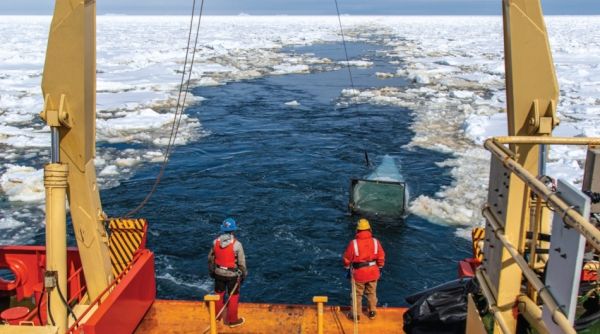A long-term study in the Southern Ocean reveals a clear correlation between warming waters, decreased sea ice, and reduced abundance of Antarctic silverfish. These small, abundant fish are important prey for penguins, seals, and other regional marine life, in a role similar to that played by anchovies or sardines in more temperate waters.
The study was published in the February 3rd issue of Communications Biology, an open-access journal from Nature Portfolio. Lead author Andrew Corso, a doctoral candidate at William & Mary’s Virginia Institute of Marine Science, says “This is the first statistically significant relationship reported between sea ice and the long-term abundance of any Antarctic fish species. With continued regional warming, these fish could disappear from the region entirely, triggering major changes in the marine ecosystem.”
Co-authors on the study are Drs. Deborah Steinberg and Eric Hilton of VIMS, along with Dr. Sharon Stammerjohn of the Institute of Arctic and Alpine Research at the University of Colorado, Boulder.
The study is based on Corso’s analysis of more than 7,000 larval fish specimens collected over 25 years (1993–2017) as part of VIMS’ participation in the NSF-funded Palmer Antarctica Long-Term Ecological Research program. The Palmer LTER is an ongoing investigation of the effects of climate change on the ocean food web along the west coast of the Antarctic Peninsula.
Read more at: Virginia Institute of Marine Science
Net Tow Researchers in the Palmer Long-Term Ecological Research program conduct a net tow from the fantail of the research icebreaker Laurence M. Gould in the icy waters of the Southern Ocean along the western Antarctic Peninsula. These net tows sample polar zooplankton, including the larvae of Antarctic silverfish. (Photo Credit: © Andrew Corso/VIMS)


